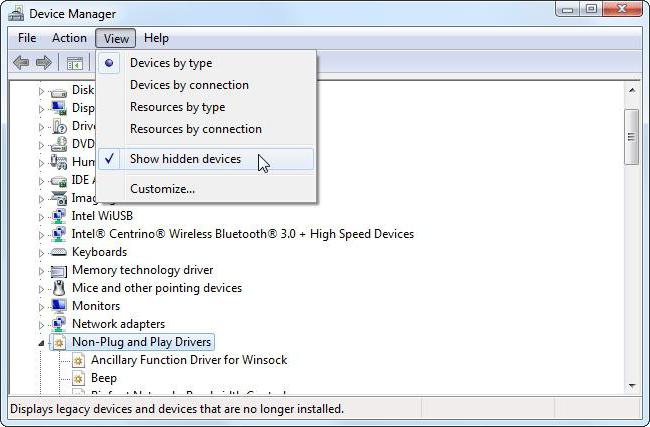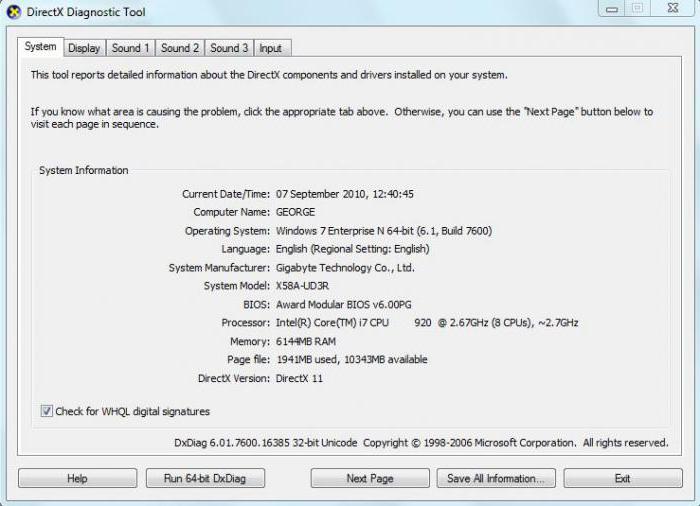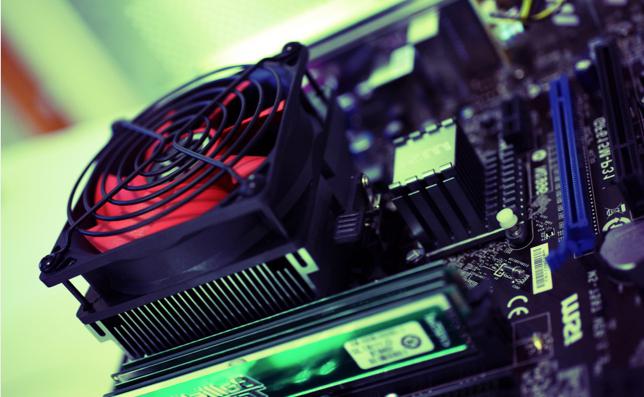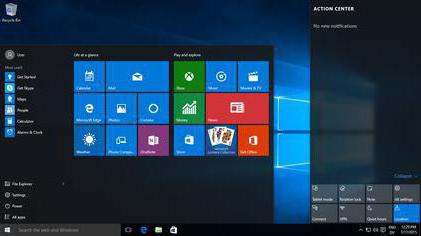Where and how to view the properties of a computer in Windows systems
Most owners of computers or laptopsare asked to view the main characteristics of their system, maybe from pure interest, and sometimes - to find out the parameters in order to replace a particular component. But it also happens that the user does not know where the properties of the computer as such can be found for viewing. There are several ways to access this information.
How to view computer properties in the simplest way?
First of all, let's consider the simplest method of viewing the information of interest to the user, which is used in all Windows systems without exception.

For example, the properties of the computer (Windows 7 onboard or any other OS) can be found in the right-click menu on the "My Computer" icon (in Windows 10 - "This computer"), where the property bar is selected. Only minimal information is shown here, including the type of processor (manufacturer, number of cores, clock frequency), RAM size, model of the system unit or laptop, and the type of operating system (version, bit depth).
Similar actions in the "Control Panel"
Exactly the same actions can be performed ifgo, so to speak, in a roundabout way. In the standard "Control Panel", which is called from the Start menu or the control command from the "Run" console, you can find the corresponding link.

The section is called "System". When clicking on this link, the user enters the same window that was called in the previous case.
Computer System Properties: Device Manager
However, this was just basic information. In order to find out the properties of the computer in terms of installed hardware and software components, and even to view information about installed device drivers, you should use the so-called "Device Manager", in which you can even fix the problem if a component does not work, reinstall the driver, etc.

Access to this section can be obtained from the same"Control Panel", in the administration section, which is in the sub-menu of the right click on the computer icon, or enter the command "devmgmt.msc" in the "Run" menu bar. Here you can already see all the devices and software components, which are initially sorted by type. Sorting type can be changed in the corresponding menu in the main panel from the top.

But there is one nuance. The fact is that not all devices are displayed in the list. In order to see the hidden components, you need to use the appropriate line in the view menu.
Each device has its ownsubmenu from which you can select the property line, and then access the driver information, enable or disable the device, remove or update the driver, etc. This section is convenient because it can immediately identify devices with problems - they are marked with a yellow marker. A brief description of the problem will be provided in the properties section.
System Information
Another method that allows you to view propertiescomputer, is to use the extended information on the system. In previous versions of Windows it could be found under the name "System Information". In later versions for access, it's easiest to use the msinfo32 command, which you type in the Run console.

There is much more information already (there is eveninformation about the BIOS version and other related components). More widely available and information about the driver files and their location. In the same section, there are three main categories: the hardware, components (devices), and the software environment. In the category of components, you can find a special section of devices with malfunctions, where all problem devices will be displayed.
DirectX Dialog
There is also many unfamiliar or simplya forgotten way that allows not only to view the properties of the computer, but also to make a complete diagnosis of some components. This is the so-called DirectX dialog.

Call it in standard ways, usingthis "Control Panel" or access to other sections of the system information is impossible. You will have to enter the dxdiag command in the "Run" menu. In this section, the characteristics related to multimedia are mainly presented, not counting the main parameters of the computer system.
As already mentioned above, it is possible to carry outdiagnostics of some components. For example, on the properties tab of the monitor there are characteristics of the video chip and the state of support for the components of the DirectX bridge itself. But you can easily test support for Direct3D, DirectDraw, AGP acceleration, ffdshow usage variations, etc.
How do I know the un-displayed characteristics?
It turns out that Windows-based systemsare limited in their capabilities. After all, the properties of the computer, which can be viewed with the help of the system's tools, are not able to show the user the same processor temperature, fan speed (coolers), and a whole series of hidden parameters.

In this case, in order to reach them,use special programs like Everest, CPU-Z, GPU-Z, CoreTemp, SpeedFan, etc. Some of them provide information on "hardware", including the characteristics of the motherboard with the display of the names of equipment manufacturers, and its main parameters. Others have a narrow focus and are able to determine temperature performance. Finally, most of these utilities can be used for testing equipment, and even for overclocking a processor or graphics card, which is actually done by overclockers who prefer software rather than physical methods.







